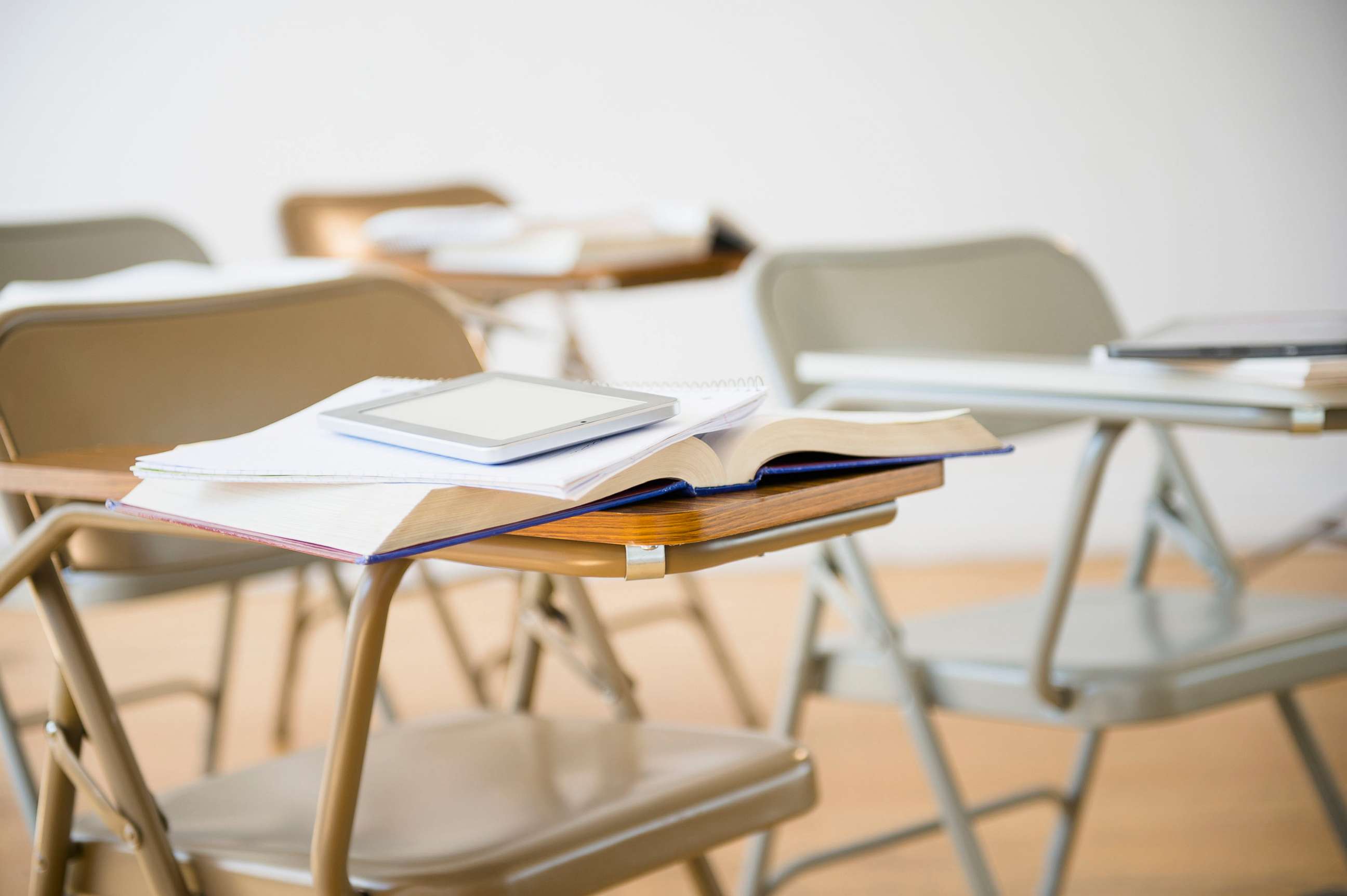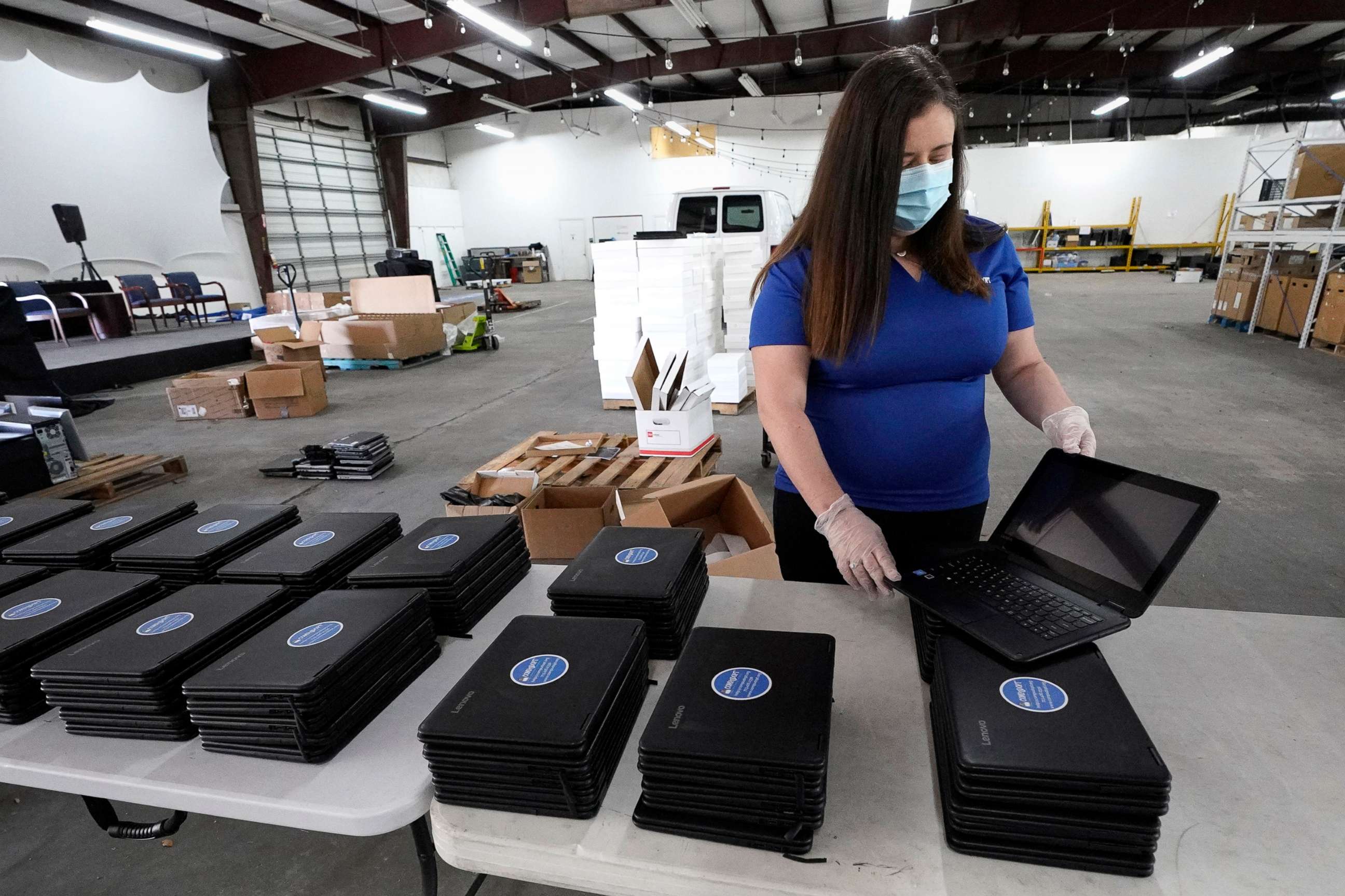As learning moves online, coronavirus highlights a growing digital divide
Internet access is a problem for many students, particularly in rural areas.
Meria Carstarphen wants to make sure her students stay connected, so the Atlanta Public Schools superintendent is taking a hands-on approach.
Sometimes it involves sitting on her student’s front porch or lawn. Sometimes she’ll even drop the tailgate on her truck.
The home visits, she said, are to ensure every student is accounted for – even if they haven’t been logging on. Then, she tries to determine why -- whether it's a device issue, problems with connectivity or a “just not doing your work issue.”
“We set up a little desk, of course, with proper social distancing gloves, a mask and so forth. But I really see how it's going for our families,” Carstarphen said.
For Amy Bowser, who teaches academically advanced students in a rural community 90 minutes north of Phoenix, it’s about calling their families. Then emailing. Then calling again. All in the hopes that her 60 students will log online to their virtual classroom.
Even then, Bowser estimates only about 30% of her students at Humboldt Unified School District will log on and complete daily check-ins – often due to lack of internet access or other hurdles for the families.

“It's unnerving when we're not able to really make that connection with that kid or that family,” Bowser said.
The “achievement gap” is the term frequently used to describe the disparities in education, often tied to race and wealth. But with coronavirus still a threat and schools moving students online, educators say they are worried the gap is growing.
Internet access is a problem for many students, particularly in rural areas. But so is access to a dedicated caregiver who can help them complete assignments.
“I think our kids are lucky if they have parents at home that can help them with their schoolwork,” said Bowser. “But I think the reality that we're dealing with in a lot of our communities is that our kids don't have anybody at home to be able to help them during this time.”
Added Carstarphen: “The inequities that existed then are just going to be supersized.”
For the students who aren’t able to access online learning, Bowser said her district is providing paper packets.
“It's discouraging in the 21st century that we are dispersing worksheets in the year 2020 to our students,” she said.
As learning has moved online amid the deadly coronavirus, the reliance on internet-based education has shed a light on a digital divide – something that experts have long flagged as an endemic problem at the core of the so-called “achievement gap” between more affluent students and their less affluent peers.
According to the National Center for Education Statistics, roughly 14% of school-aged children in metropolitan centers and 18% in more nonmetropolitan areas live in households without internet access. Roughly a third of those households surveyed in 2017 cited “expense” as a primary reason.
The report also found that lack of internet access impacts many minority students more acutely.
Some 37% of American Indian/Alaska Native children, 19% of Black children and 17% of Hispanic children lack internet access in their homes compared to 12% for Asian and White children respectively.
In the Humboldt Unified School District, there are 10 schools that service two cities, Prescott Valley and Dewey-Humboldt, Bowser said, explaining that the lack of access differs in different parts of the community.
Chromebooks were available to students, she said, but those only work for tele-learning if the family has internet connection.
National Education Association President Lily Eskelsen Garcia said the level of poverty in a school is “directly related” to the success level of remote learning.
“The kids are saying, I don't have Wi-Fi, I don't have a tablet. We have a smartphone. And my mom is a cashier at a grocery store and needs to take it with her. So, we don't have a phone…We don't have a landline. They've had to be so creative,” Eskelsen Garcia said.

The digital obstacles have pushed educators to think outside the box for ways to get the information to their students, like offering lessons on local television stations and providing devices and hotspots.
In Atlanta, Carstarphen said they initially pushed out around 7,500 iPads to first and second graders, and another 8,000 laptops to six, seventh and eighth graders, and an additional 9,500 Chromebooks. Atlanta Public Schools also sent out around 9,000 hotspots, she said. They have moved to a mail-based delivery system to provide more, she added.
“I think the inequities we knew before about black, brown, poor, you know, subgroups of students like special ed, English language learners who have already received like a disservice in public education over the last few decades, the inequities that existed then are just going to be supersized,” Carstarphen said.
And then there are stretches of the country where broadband access is completely lacking.
Carla Kimmel, a second-grade reading interventionist in what she described as a “one stoplight town” in rural Oklahoma, said the lack of internet has widened the digital divide.
“We've tried to reach out every way we could to communicate, because this town, there's so many students that don't have Wi-Fi, they don't have access to any broadband, anything. It's like, they’re just too far out in the country,” Kimmel said.
Kimmel said the definition for distance learning was “providing students with those continued learning opportunities at home, whatever way that would be.”
“And so, it may or may not include technology, which we found out pretty quick, it was going to be whatever makes sense for your own individual district. And the approach that we took and so many of ours, ended up needing a packet made up by their, by the classroom teachers,” she said.
Eskelsen Garcia said getting students digitally connected is something she and her organization have been advocating for, for years, describing it as essential as “indoor plumbing.”
“These kids who have very, very limited experiences with digital learning are going to be at a greater disadvantage than they already are,” she said. “And so, we've been begging for years, long before anyone pronounced the words coronavirus, saying we've got to get these kids connected. We've got to think of ways to get them a laptop.”
According to Pew Research Center, the disparity in adults who are home broadband users is stark when it comes to race, income and community type.
As of 2019, 63% of rural adults are home broadband users, compared to 79% in suburban areas.
And only 56% of adults who earn less than $30,000 a year are home broadband users, compared to those who make between $30,000-$49,999 with 72%.
Carstarphen echoed Eskelsen Garcia, saying she has been talking about treating internet access like a public utility, “the same way we when our kids leave a school and they have, you know, water, drinking water, flushable toilets, a place to wash their hands.”
“It shouldn't be about whether or not the parent has done right by the company,” Carstarphen said.
“There should be some service that that is, like, for children in school to be able to have access to their learning. And if you're poor and you can't afford your bills to begin with, then now we're gonna say you don't have access to a free and appropriate education -- that seems, you know, to me that’s just like illegal if not immoral.”




